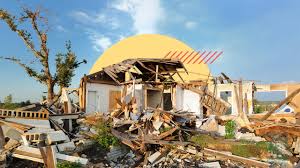
Natural Disaster Strikes – Is Your Coverage Enough?
Floods. Wildfires. Earthquakes. Hurricanes.
When a natural disaster hits, it doesn’t knock first. It just arrives—and the damage can be devastating. But the real shock for many homeowners comes after the storm, when they discover their insurance doesn’t cover nearly as much as they thought.
So ask yourself: If disaster struck tomorrow, would your current insurance truly protect you?
Let’s break down what you need to know—before it’s too late.
💥 The “Standard Policy” Myth
Many homeowners believe a standard policy covers all types of damage. But that’s not true.
In fact, most standard policies exclude damage from common natural disasters like:
-
Flooding
-
Earthquakes
-
Mudslides
-
Wildfires (in high-risk zones)
Unless you have add-on coverage (called endorsements or riders), you may be on your own financially when disaster strikes.
🌊 What Your Policy Likely Doesn’t Cover
Here are a few key examples of what might be missing from your standard policy:
1. Flood Insurance
Damage from flooding—including storm surge—is not covered by most homeowners insurance. You need a separate policy, typically from the National Flood Insurance Program (NFIP) or a private insurer.
💡Tip: Even if you’re not in a flood zone, flash floods can happen almost anywhere.
2. Earthquake Insurance
Just like flooding, earthquakes require separate coverage. This includes shaking damage, as well as related issues like landslides or aftershock cracks.
Many people skip this because it’s optional—until it’s not.
3. Sewer Backup & Power Outage
After a storm, sewage backups and power loss can cause thousands in damage. Most base policies don’t cover this unless you’ve added endorsements.
4. Personal Belongings & Rebuilding Costs
Even if your home is covered, your coverage limit for belongings and structure may not be enough—especially with inflation driving up construction and replacement costs.
📊 Know Your Policy’s Key Numbers
Before disaster strikes, review these crucial areas:
-
Dwelling Coverage Limit – Will it cover the full cost to rebuild your home at today’s rates?
-
Personal Property Coverage – Are your electronics, jewelry, and valuables included?
-
Loss of Use Coverage – Will it pay for temporary housing if your home becomes unlivable?
-
Deductibles – Disaster deductibles can be percentage-based (2–5% of your home’s value), not flat fees.
🧾 How to Get Proper Protection
✅ 1. Talk to Your Insurer
Ask for a detailed explanation of what’s covered—and what isn’t. Don’t assume. Get it in writing.
✅ 2. Get Disaster-Specific Policies
Flood, earthquake, wildfire, and windstorm policies are often sold separately. If you live in a high-risk area, they’re essential.
✅ 3. Review Annually
Building costs, climate risks, and your home’s value all change over time. Review your coverage at least once a year to stay prepared.
✅ 4. Create a Home Inventory
Document your belongings with photos, videos, and receipts. It makes filing a claim faster and more successful.
🧠 Final Thought
Natural disasters are unpredictable—but your preparedness doesn’t have to be. The time to check your coverage is before the next storm, not after.
Take 30 minutes today to review your policy. It could save you thousands—or everything—in the future.